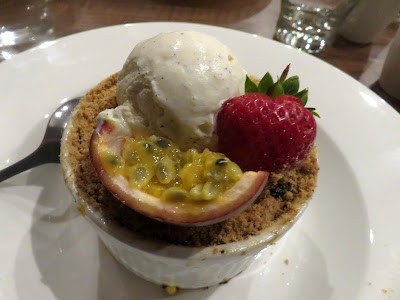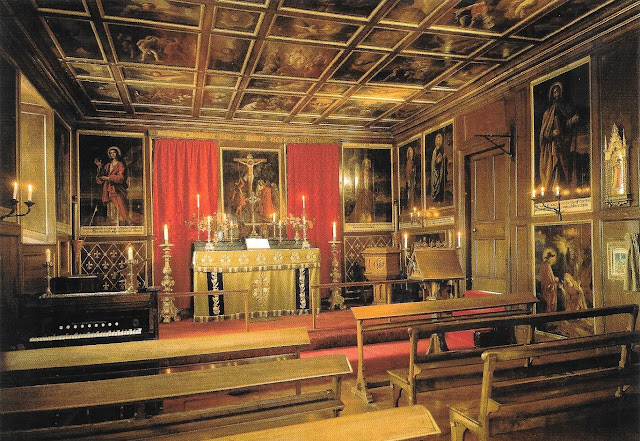After
leaving our hotel in Glenrothes Fife, we headed north toward Braemar and the
Scottish Highlands. We’d determined that
Glamis Castle would be a key stop along the way…but first we had to navigate
the roads along the way!
The roads
across Fife to the Firth of Tay were decent and we made good time. This is the bridge across the Firth to the
city of Dundee Scotland. Historically,
Dundee is part of Angus, one of 32 local government council areas of
Scotland.
With a population of about
150,000, the city is Scotland’s 4th
largest metropolitan area after Glasgow, Edinburgh and Aberdeen.
Dundee’s early growth and success as a seaport probably came
as the result of William the Lion’s charter which granted Dundee to his younger
brother David, later the Earl of Huntingdon in the late 12th
century. William the Lion was the King
of Scots from 1165 to 1214. The town and
its castle were occupied by English forces for several years but was recaptured
by Robert the Bruce in 1312. If my math
serves me right, Dundee is approaching its thousanth birthday sometime this
century…
The ‘fun’
began after we crossed the bridge into the city. Road improvements, a confusing temporary
traffic layout, the usual 'roundabouts' and a GPS that was also confused or confusing, led to my
crossing back over the bridge and then back to Dundee again before we could
navigate our way out of town…
I suspect
that part of my traffic woes were the result of Dundee’s ongoing 1 billion
pound ($1.31 billion US) master plan to regenerate and reconnect the city’s
waterfront with the city center. This
project started in 2001 and is expected to take another 14 years or so…
Notes:
· Dundee
has 2 football (soccer) clubs, Dundee United and Dundee F.C. Their stadiums are situated right next to
each other…
·
Dundee
accounts for 10% of the United Kingdom’s digital-entertainment industry. Rockstar North, the developer of “Lemmings”
and “Grand Theft Auto” was founded in Dundee as DMA Design.
·
The
oldest building still extant in Dundee is St. Mary’s Tower which dates back to
the late 15th century.
Dundee’s older structures were mostly destroyed during a war between
Scotland and England between 1543 and 1551 that is often referred to as “The
Rough Wooing”.
Once we
cleared Dundee, the drive to Glamis Castle was a breeze. This is the public entrance to the
castle. Visitors buy their tickets for
the visit at the blue ticket booths shown above. Prices were 10.50 BP/$13.75 for seniors and
12.50 BP/$16.38 for adults. The castle
is open to visitors from 10 AM until 5:30 PM with the last tour at 4:30 PM.
This is
the view of the castle as you drive to the parking area. It’s very pretty and very impressive!
Glamis
Castle is located near the village of Glamis in Angus, Scotland. The castle is the home of the Earl and
Countess of Strathmore and Kinghorne.
The castle has been the home of the Lyon family since the 14th
century. However, most of the structure
dates from the 17th century.
Glamis
castle was the childhood home of Queen Elizabeth - The Queen Mother and the
wife of King George VI. Queen Elizabeth
II’s sister, Princess Margaret, the Countess of Snowdon was born here…
This
aerial view of Glamis Castle that I borrowed from a postcard that I purchased,
gives you an idea of the size and scope of the structure… The castle was first occupied in 1372. Today the estate encompasses over 14,000
acres.
This is a
view of the back of Glamis Castle from the visitor center and gift shop near
the parking area.
In
addition to the castle with its parks and gardens, this working estate produces
several cash crops including lumber and beef.
Two streams flow though the property.
An arboretum on the property features trees from all over the
world. Many of them are rare and
hundreds of years old…
We walked
around to the front of the castle to get a good look. Workers were taking down a huge tent at one
side of the castle following some kind of big event. The castle’s website provides information on
gala dinners, weddings, product launches and other event possibilities.
I took
this photo of Laurie with her sister Bonnie and Bonnie’s husband Bill on the
castle grounds.
It’s
believed that Glamis was a royal hunting lodge at the time of its first
grant. It wasn’t until the first part of
the 15th century that any part of the current structure was
built. Many legends and myths
abound. King Malcom II was said to have
been murdered here in the 11th century. King James V had Lady Janet Douglas, the
widow of Lord Glamis, burned at the stake in 1540 as a witch.
Laurie
then took this photo of yours truly with Bonnie and Bill…
Another
fact of interest is that Glamis Castle is the setting for Shakespeare’s
“Macbeth” and it’s referred to numerous times in his play. “Glamis thou art”, “and yet woulds’t wrongly
win: thou’dst have great Glamis”. It is
generally believed that Duncan was murdered here by Macbeth.
Our
guide, who was very friendly and knowledgeable, straightened us out on one fact
right at the start of our tour. Glamis
is pronounced ‘GLAMS’.
Unfortunately…but
understandably…no photos were allowed inside the castle. Consequently, I’m sure that the gift shop
sells a lot of postcards! Of the many,
many rooms in the castle, the tour is limited to only 10. However, it is enough rooms to capture the ‘feel’
of life in a castle.
This is
the dining room with the table set for a party of 12 but the room can seat up
to 40 guests. The woodwork, furniture
and paintings throughout the tour are exceptional.
This is
the 46 seat family chapel at Glamis. It
is still used regularly for Lyon family functions. According to the tour guide, one seat in the
chapel is always reserved for the “White Lady”, a ghost that allegedly inhabits
the castle. It’s thought to be Janet
Douglas, Lady Glamis who was burned at the stake.
After
Janet Douglas, widow of the 6th Lord Glamis, was burned at the stake
by James V, the lands and castle were pillaged by royal forces and John Lyon,
Janet’s son, was also sentenced to death.
However he was too young for the sentence to be carried out. Consequently, when James V died in 1542, John
was released. He later recovered the
property and the title.
The chapel
features paintings by Dutch artist Jacob de Wet. The most famous of the paintings is partially
covered by a curtain at the right of the photo.
It shows Christ wearing a hat, one of only 6 such paintings in the world.
This room
is called the Crypt…and you can easily see why.
The crypt was the lower hall of the 15th century tower house
where the lord’s retainers would dine. Chain
mail hanging here dates from the 19th century. There are numerous big game heads, weapons
and armor as well as a saddle, a relic of Oliver Cromwell’s occupation of the castle. This is one of the oldest and most impregnable
parts of the castle.
Note:
·
A legendary
secret chamber is thought to be located deep in the thick walls of the crypt. In this room it is said that one of the Lords
of Glamis and the Earl of Crawford played cards with the Devil himself on the
Sabbath. A series of resulting
disturbances and events caused the room to be built up and permanently sealed
300 years later. However, some claim
that the players were sealed in the room...
This is
the drawing room. It looks ‘just like’
my living room in East Tennessee and I’m sure it ‘closely resembles’ the same
room in many of your family homes. The
furnishings and decorative items are just a bit over the top…but I think that
the room is still warm and welcoming.
Note:
The castle and its tour are not handicapped
friendly. There are lots of stairs along
the route but it’s worth the effort if one is able.
This was The
Queen Mother’s sitting room. Her desk is
in the window at the center rear of the photo. The nice thing about this room is that since
the Queen Mother visited Glamis regularly throughout her life, in many ways the
sitting room was like that of any other family home. It is filled with family photos and other
personal items.
Elizabeth
Angela Marguerite Bowes-Lyon (1900 – 2002) was the wife of King George VI and
she was Queen Elizabeth II’s mother. She
was Queen of the United Kingdom and the Dominions from the time that her
husband acceded the throne in 1936 until his death in 1952. After Elizabeth II became Queen, her mother
was known as Queen Elizabeth, the Queen Mother…popularly referred to as the ‘Queen
Mum’. She was the last Empress of India.
I’m
guessing that this is the wing of the castle where the family of Simon Patrick
Bowes-Lyon, 19th Lord Glamis and 6th Earl of Strathmore
and Kingshorne resides for at least part of the year. The Earl was born in 1986 and he is the first
cousin twice removed of Queen Elizabeth II and a great-grandnephew of the late
Queen Elizabeth…The Queen Mother. Our guide
told us that the family has 80 private rooms in the castle.
One final
view of Glamis Castle… As it turned out, this was the only occupied and intact castle
that we visited during our adventures in Scotland and Ireland. We would recommend the visit and tour to
anyone interested in history and royalty…
Notes:
·
Mary,
Queen of Scots stayed a Glamis Castle in 1562.
·
The
castle has a total of 125 rooms.
·
One
stairwell leading from the basement to the battlements has 143 steps…
…One
final photo from Glamis, or at least the Glamis Castle/Lyon family estate. The estate has a large number of residential
properties, ranging from 2 bedroom cottages to larger 4 bedroom
farmhouses. This classic beautiful thatched roof
dwelling is one of them. The demand for
let (rental) property is high as the estate is a popular place to live and
turnover is low.
In
addition to housing, the estate includes a number of commercial
properties. These include radio towers,
the Glamis Corner Shop and Post Office, Strathmore Arms Public House and Hotel,
workshops and garages, a sand and gravel quarry as well as a wind farm that is
under development. Finally, about 7,500
acres of agricultural land is leased out.
That’s
it for now… Just click on any of the photos to enlarge them.
Thanks
for stopping by to keep up with our tour of Scotland!
Take
Care, Big Daddy Dave

































































